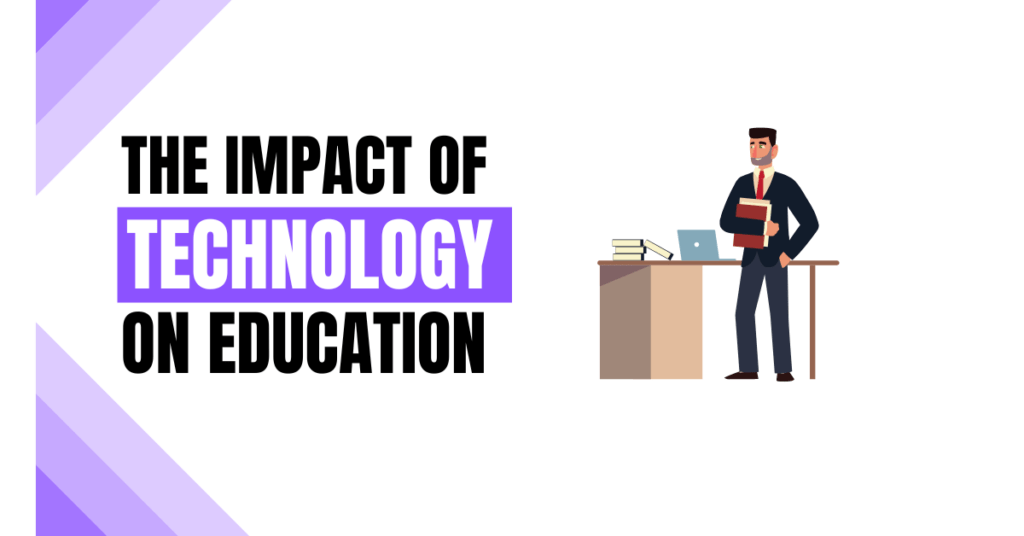
How Important Is Technology in Education?

In an era where technological advancements have reshaped every aspect of our lives, it is no surprise that education has also undergone a profound transformation.
The traditional chalkboard and textbooks are now complemented and, in many cases, replaced by an array of cutting-edge educational technologies.
As the world hurtles towards a digital future, educators and learners alike find themselves on a transformative journey, harnessing the power of technology to unlock new potentials in the realm of education.
Technology integration in education has opened up a vast landscape of opportunities, redefining how knowledge is imparted and absorbed.
Technology is revolutionizing how we approach education at every level, from interactive learning environments to personalized study plans.
This article delves into how technology has become an indispensable companion in the modern classroom and beyond.
Evolution of Technology in Education:
The evolution of technology in education is a captivating journey that has significantly shaped the way knowledge is imparted and acquired. It began with humble tools such as chalkboards and projectors, revolutionizing classrooms by introducing visual aids.
Over time, advancements in audio-visual technologies, like overhead projectors and educational films, further enriched the learning experience.
The breakthrough of the personal computer in the 1980s marked a turning point in educational technology. Computers enable interactive learning through educational software and multimedia applications.
With the advent of the internet in the 1990s, a vast repository of knowledge became accessible at students’ fingertips, marking the dawn of the digital age in education.
In recent years, mobile devices like tablets and smartphones have taken center stage, allowing learners to access educational content anytime, anywhere.
This mobile revolution has ushered in a new era of flexibility and convenience, enabling educators to create mobile-responsive educational resources and applications.
Types of Educational Technology:
Learning Management Systems (LMS): LMS platforms are central hubs for managing course content, assessments, and communication between teachers and students. They facilitate the distribution of online assignments, track student progress, and provide a collaborative space for discussions.
Interactive Whiteboards: Interactive whiteboards transform traditional chalkboards into dynamic digital screens. They allow educators to present multimedia content, engage students through interactive activities, and record classroom sessions for future reference.
Educational Apps: There is an abundance of educational apps catering to diverse subjects and age groups. These apps offer interactive and gamified learning experiences, enhancing students’ engagement and understanding of complex concepts.
Virtual and Augmented Reality (VR/AR): VR and AR technologies transport students to immersive learning environments. From exploring ancient historical sites to understanding complex scientific phenomena, these technologies make learning experiential and captivating.
Online Learning Platforms: Online learning platforms offer various courses, from academic subjects to professional development. They provide self-paced learning opportunities and often incorporate interactive quizzes and assessments.
Open Educational Resources (OER): OER is freely accessible learning materials, including textbooks, videos, and courses, that can be used, modified, and shared by educators and learners. They promote equitable access to quality education.
Advantages of Technology in Education:
Educational technology goes beyond mere digitizing traditional materials; it empowers educators to craft dynamic, engaging, and inclusive learning experiences. Gone are the days of one-size-fits-all education, as technology paves the way for personalized learning paths.
With sophisticated algorithms, educators can analyze individual students’ learning patterns and preferences, tailoring the curriculum to meet their needs. This fosters a more supportive and conducive environment for students to thrive.
Moreover, technology democratizes education by breaking down barriers of access and location. Online learning platforms and digital classrooms enable students from diverse backgrounds and geographies to access quality education like never before.
Whether a student in a remote village or an adult learner with work commitments, educational technology offers flexibility and convenience, allowing them to pursue knowledge on their terms.
The Role of Artificial Intelligence (AI) and Machine Learning:
Artificial Intelligence and Machine Learning stand at the forefront of the educational technology revolution. These sophisticated technologies empower educators with tools like intelligent tutoring systems, which analyze students’ progress in real-time and provide personalized feedback.
Additionally, AI-driven automated grading systems streamline the assessment process, freeing educators to focus on engaging with students more effectively.
Challenges and Concerns:
Despite the numerous advantages of educational technology, some challenges and concerns need to be addressed:
Digital Divide: Unequal access to technology and the internet can create a digital divide, disadvantaged students from low-income backgrounds or remote areas.
Data Privacy and Security: Educational technology platforms collect vast student data. Ensuring the privacy and security of this data is crucial to protect students’ information.
Digital Distractions: Technology can sometimes be a double-edged sword, as it may lead to distractions and reduced focus in the learning environment.
Technological Reliability: Dependence on technology means that technical glitches and system failures can disrupt the learning process.
Teacher Training: Educators need proper training and support to integrate technology into their teaching methods effectively.
The Future of Technology in Education:
The future of technology in education is bright and brimming with possibilities. Emerging technologies like artificial Intelligence, blockchain, and Extended Reality (XR) can further revolutionize education.
Artificial Intelligence will continue to drive personalized learning experiences, adapting content to suit individual needs and learning styles.
Additionally, AI-powered chatbots and virtual assistants will be deployed to provide instant student support, helping with inquiries and solving problems.
Blockchain technology could verify and secure educational credentials, revolutionizing the accreditation process and creating a global, tamper-proof record of academic achievements.
Extended Reality, which includes VR, AR, and mixed Reality, will enable learners to immerse themselves in lifelike simulations, bringing abstract concepts to life and enabling experiential learning.
Conclusion:
As we peer into the future, one thing is clear – technology in education is not a fad; it is an indispensable force propelling education to greater heights.
The once static and monotonous classrooms have given way to vibrant learning hubs enriched by the wonders of technology.
Embracing these digital tools with prudence and foresight is the key to harnessing their true potential as we prepare the next generation to thrive in an ever-evolving world.